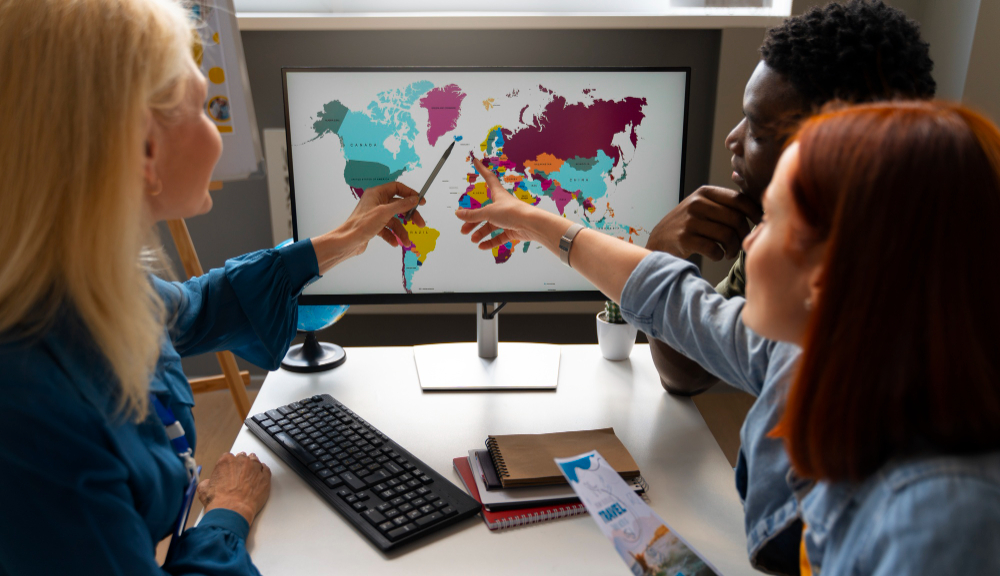Diversifying Beyond the US: Expanding Investment Horizons for Global Growth
Discover how diversifying beyond the US can strengthen your portfolio, reduce risk, and capture emerging global growth opportunities.
Invest smarter by thinking global.
For decades, the United States has stood as the dominant force in global investing, home to powerhouse companies and consistent market performance.
Yet, as the world economy evolves, many investors are realizing the value of looking beyond American borders.
Diversifying internationally is no longer a niche strategy—it’s a smart way to balance risks and tap into emerging growth potential.
Investing solely in US assets may offer familiarity and stability, but it can also mean missing out on dynamic markets that are expanding faster than the US economy.
By spreading investments across different regions, sectors, and currencies, investors can achieve a more balanced portfolio capable of weathering market volatility.

Why Diversify Beyond the US?
Diversification is the cornerstone of sound investing. When markets fluctuate, having exposure to various regions helps cushion losses in one area with gains in another.
The US market, while strong, represents only about 60% of global stock capitalization. That means a significant portion of the world’s economic activity happens elsewhere—and investors who ignore it risk missing valuable opportunities.
Emerging markets in Asia, Latin America, and Africa are becoming engines of innovation and growth. These regions often experience rapid economic expansion, rising middle classes, and increased consumer spending. By allocating a portion of your investments globally, you can capture these trends and benefit from the diversification of both economic cycles and currencies.
Growth Opportunities Around the World
Europe continues to offer stability with strong governance, developed infrastructure, and established financial systems.
Although growth is slower compared to emerging economies, European equities often provide attractive dividends and resilience during downturns. In contrast, countries like India and Indonesia are expanding rapidly, supported by young populations and increasing technological adoption.
Latin America, particularly Mexico and Brazil, is also gaining investor attention thanks to resource-rich industries and growing trade partnerships. Meanwhile, parts of Africa are becoming hotspots for innovation in fintech and renewable energy.
These developments showcase that opportunity is not limited to Wall Street—global markets are full of untapped potential.
Managing Risks and Volatility
Of course, international investing comes with its own set of challenges. Political instability, currency fluctuations, and differing regulatory environments can affect returns.
However, these risks can be managed through careful allocation and diversification among regions and asset types.
Investors can mitigate exposure by choosing international index funds, global ETFs, or mutual funds managed by professionals with local expertise.
These instruments spread risk across numerous companies and countries, making it easier to access global markets without the need for deep regional knowledge.
Currency diversification is another benefit. When the US dollar weakens, foreign investments can appreciate in value, helping to balance your portfolio’s overall performance. This dynamic acts as a natural hedge against domestic downturns or inflation.
How to Get Started
For beginners, the easiest path to global diversification is through funds that track international or emerging market indices.
Exchange-traded funds (ETFs) such as those tracking the MSCI Emerging Markets Index or the FTSE All-World ex-US Index provide instant access to a broad range of markets.
Investors seeking more control can also look into direct investments in foreign companies listed on major exchanges, or consider American Depositary Receipts (ADRs), which allow US investors to own shares in non-US companies through domestic markets.
Before expanding globally, it’s crucial to assess your risk tolerance, investment goals, and time horizon. Diversification should enhance your portfolio’s stability, not complicate it.
A financial advisor specializing in international investments can help create a strategy that balances global opportunity with manageable risk.
Final Thoughts
The global economy is too vast and dynamic to be confined within one nation’s borders.
While the US remains a cornerstone of any solid portfolio, true financial resilience comes from spreading your investments across the globe.
International diversification helps protect against volatility, unlocks access to new industries, and sets the stage for long-term success.
In an era defined by change, expanding beyond the US isn’t just a smart move—it’s an essential one.





